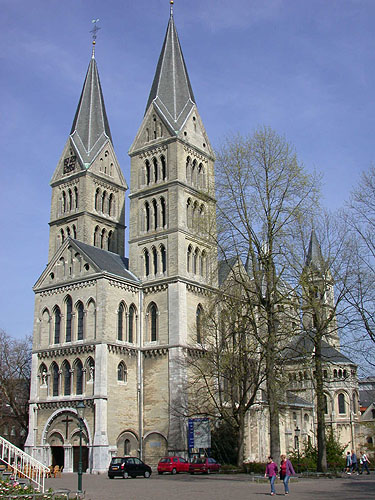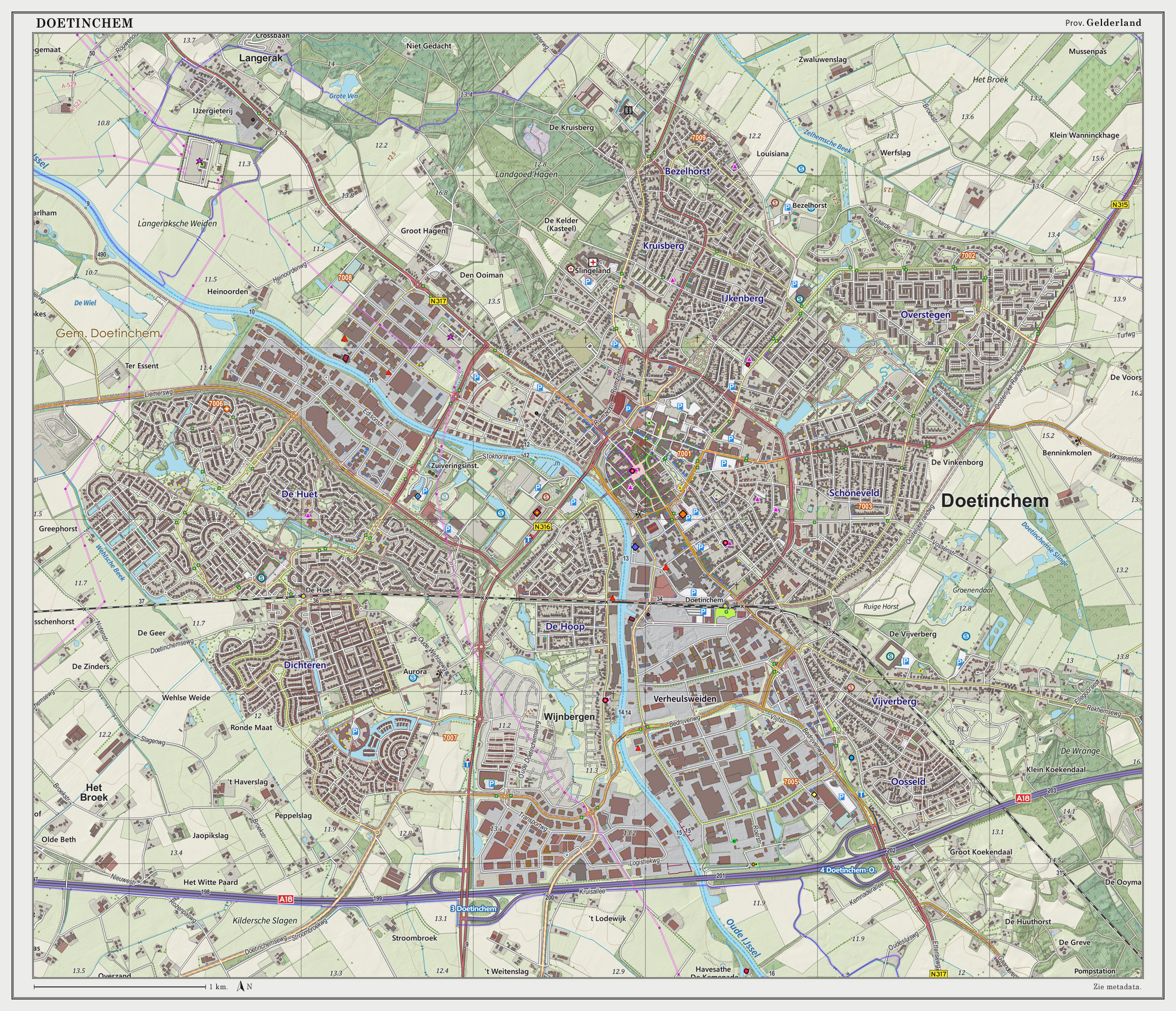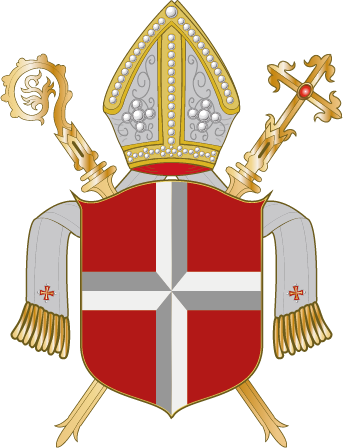|
Richardis Of Bavaria
Richardis of Bavaria (1173 – 7 December 1231) was a German noblewoman. She was a daughter of Count Palatine Otto I of Bavaria, who later became the first Wittelsbach ''Duke'' of Bavaria, and his wife Agnes of Loon. Richardis married Otto I of Guelders, and after his death became the first abbess of the Cistercian Abbey of Roermond. She died in 1231 and was buried in the Church of Our Lady, today the only surviving part of the abbey. Life Richardis was an influential person in Gelderland politics. Her family carried the same lion in their coat of arms as the counts of Guelders. In 1186, she married Otto I, Count of Guelders. They had many children together, including three sons, as specified by the ''Genealogia Ottonis II Ducis Bavariæ''. Their known children are: Henry, who died young, shortly after his engagement to Aleidis (born ), daughter of Dirk VII of Holland; Gerard, the Count of Guelders and Zutphen; Otto, who is recorded as Otto I's brother in one document ... [...More Info...] [...Related Items...] OR: [Wikipedia] [Google] [Baidu] |
House Of Wittelsbach
The House of Wittelsbach () is a German dynasty, with branches that have ruled over territories including Bavaria, the Palatinate, Holland and Zeeland, Sweden (with Finland), Denmark, Norway, Hungary (with Romania), Bohemia, the Electorate of Cologne and other prince-bishoprics, and Greece. Their ancestral lands of the Palatinate and Bavaria were Prince-electorates, and the family had three of its members elected emperors and kings of the Holy Roman Empire. They ruled over the Kingdom of Bavaria which was created in 1805 and continued to exist until 1918. The House of Windsor, the reigning royal house of the British monarchy, are descendants of Sophia of Hanover, a Wittelsbach Princess of the Palatinate by birth and Electress of Hanover by marriage, who had inherited the succession rights of the House of Stuart and passed them on to the House of Hanover. History When Otto I, Count of Scheyern, died in 1072, his third son Otto II, Count of Scheyern, acquired the castle of ... [...More Info...] [...Related Items...] OR: [Wikipedia] [Google] [Baidu] |
Dirk VII, Count Of Holland
Dirk VII (died 4 November 1203, in Dordrecht) was the count of Holland from 1190 to 1203. He was the elder son of Floris III and Ada of Huntingdon. Life Due to a civil war in the Holy Roman Empire, Emperor Henry VI had to find ways to make friends. He supported Dirk by giving him the right to levy tolls on Flemish traders in Geervliet. Henry also gave Holland the Grote Waard (Dordrecht and its surroundings), at the cost of the bishopric of Utrecht. He also set aside the Salic law for the succession to the County of Holland, which meant that it could be inherited by a female heir. In 1196, Dirk temporarily gained the princely authority of the bishopric of Utrecht. This meant war with Count Otto I of Guelders. Otto was defeated at the Battle of the Grebbeberg. In 1197 Dirk van Are was elected as the new bishop. As such, he recovered the princely authority of Utrecht. The Hohenstaufens were losing the civil war, so Count Dirk changed sides and gave his allegiance to the Welfs. ... [...More Info...] [...Related Items...] OR: [Wikipedia] [Google] [Baidu] |
Deventer
Deventer (; Sallands: ) is a city and municipality in the Salland historical region of the province of Overijssel, Netherlands. In 2020, Deventer had a population of 100,913. The city is largely situated on the east bank of the river IJssel, but it also has a small part of its territory on the west bank. In 2005 the municipality of Bathmen (with a population of about 5,000 people) was merged with Deventer as part of a national effort to reduce bureaucracy in the country. Deventer is one of the oldest cities in the Netherlands. The place is already mentioned in 9th-century sources of the Diocese of Utrecht. In a charter from 877 AD mentions seven hooves in ''Daventre portu'' (the Deventer harbor). In 952 AD, Deventer is mentioned as a city in a gift certificate from King Otto I. After the place had acquired more and more rights and privileges over time, it received the municipal lands from Emperor Henry V in 1123. This is considered by historians to be the moment of Deventer o ... [...More Info...] [...Related Items...] OR: [Wikipedia] [Google] [Baidu] |
Apostolic Visitor
In the Catholic Church, an apostolic visitor (or ''Apostolic Visitator''; Italian: Visitatore apostolico) is a papal representative with a transient mission to perform a canonical visitation of relatively short duration. The visitor is deputed to investigate a special circumstance in a diocese or country, and to submit a report to the Holy See at the conclusion of the investigation. History Apostolic visitors are church officials whom canonists commonly class with papal legates. Visitors differ from other Apostolic delegates, principally in this, that their mission is only transient and of comparatively short duration. In ancient times, the popes generally exercised their right of inspecting the dioceses of various countries through their nuncios or delegates (c. 1, Extravag. Comm. de Consuet. I, 1; c. 17, X, de Cens. III, 39), though they occasionally, even in the primitive ages, sent special visitors. In the modern time, the mission of papal nuncios is rather of a dipl ... [...More Info...] [...Related Items...] OR: [Wikipedia] [Google] [Baidu] |
Kamp Abbey
Kamp Abbey (Kloster Kamp), also known as Altenkamp Abbey or Alt(en)feld Abbey (and in English formerly Camp Abbey) was the first Cistercian monastery founded in German territory, in the present town of Kamp-Lintfort in North Rhine-Westphalia. History It was founded in 1123 by Friedrich I, Archbishop of Cologne, and settled from Morimond Abbey. As the first Cistercian foundation in the region it attracted great endowments and became very wealthy and powerful. It was extremely active in the foundation of daughter houses: :In Germany: Walkenried Abbey (1129); Amelungsborn Abbey (c.1129); Volkenroda Abbey (1131); Hardehausen Abbey (1140); Michaelstein Abbey (1146); Saarn Abbey (1214); Neuenkamp Abbey (1231); Bottenbroich Abbey (1231); Burlo Abbey (1448); and Grevenbroich Abbey (1628); :In the Netherlands: Eiteren Abbey (1342); Mariënkroon Abbey(1382); and Sibculo Abbey (1412). Kamp was largely rebuilt in the 15th century but suffered extensive damage in the Reformation. ... [...More Info...] [...Related Items...] OR: [Wikipedia] [Google] [Baidu] |
Cistercian Order
The Cistercians, () officially the Order of Cistercians ( la, (Sacer) Ordo Cisterciensis, abbreviated as OCist or SOCist), are a Catholic religious order of monks and nuns that branched off from the Benedictines and follow the Rule of Saint Benedict, as well as the contributions of the highly-influential Bernard of Clairvaux, Saint Bernard of Clairvaux, known as the Latin Rule. They are also known as Bernardines, after Saint Bernard himself, or as White Monks, in reference to the colour of the "cuculla" or cowl (choir robe) worn by the Cistercians over their habits, as opposed to the black cowl worn by Benedictines. The term ''Cistercian'' derives from ''Cistercium,'' the Latin name for the locale of Cîteaux, near Dijon in eastern France. It was here that a group of Benedictine monks from the monastery of Molesme Abbey, Molesme founded Cîteaux Abbey in 1098, with the goal of following more closely the Rule of Saint Benedict. The best known of them were Robert of Molesme, Alb ... [...More Info...] [...Related Items...] OR: [Wikipedia] [Google] [Baidu] |
Munsterkerk Munsterplein Roermond Nederland-01
The Munsterkerk (''Munster'') is a 13th-century church dedicated to Our Lady in the Dutch town of Roermond. Its remarkable front towers are 55 meter in height. The Munsterkerk is one of the most important examples of Late Romanesque architecture in the Netherlands. The Roermond Minster is the only surviving part of an abbey, the rest of which was demolished in 1924. The church was renovated by architect P. J. H. Cuypers between 1863 and 1890; during this renovation, the two front towers were added while after a smaller baroque bell tower on the nave was removed, and the originally octagonal eastern towers were replaced by square ones. The renovation of the Roermond Minster was highly controversial, but Cuypers continued to renovate the Minster according to his plan. In 1992, the church was damaged by an earthquake which destroyed the two eastern towers, which were rebuilt shortly after. The church is a Rijksmonument, and is part of the Top 100 Dutch heritage sites. Burials ... [...More Info...] [...Related Items...] OR: [Wikipedia] [Google] [Baidu] |
Doetinchem
Doetinchem (; Low Saxon: ) is a city and municipality in the east of the Netherlands. It is situated along the Oude IJssel (Old IJssel) river in a part of the province of Gelderland called the Achterhoek. The municipality had a population of in and consists of an area of of which is water. This makes Doetinchem the largest town (by population) in the Achterhoek. On 1 January 2005, a municipal restructuring merged the neighbouring municipality of Wehl as well as the Zelhelmse Broek area with Doetinchem. Population centres The local government organization in the Netherlands is complex and fine-grained (see municipality and Govt Stats, with municipalities being divided into various entities. The municipality of Doetinchem consists of: The city ('stad'): * Doetinchem The neighborhoods ('wijken'): * Centrum * Bezelhorst * Dichteren * Overstegen * De Huet * De Hoop * Oosseld * Schöneveld & Muziekbuurt The townships ('buurtschappen'): * Gaanderen * Wehl * IJzevoorde * Lan ... [...More Info...] [...Related Items...] OR: [Wikipedia] [Google] [Baidu] |
William I, Count Of Holland
William I (c. 1167 – 4 February 1222) was count of Holland from 1203 to 1222. He was the younger son of Floris III and Ada of Huntingdon. Early life William was born in The Hague, but raised in Scotland. He participated in the Third Crusade under Emperor Frederick I alongside his father, Floris, and his uncle Otto of Bentheim. He started a revolt against his brother, Dirk VII and became count in Friesland after a reconciliation. Friesland was considered a part of Holland by the counts of Holland. His niece Ada inherited Holland in 1203, but William refused to accept this. After a war of succession, known as the Loon War (1203–1206), William won the county. Ada and her husband, Louis II of Loon, were supported by the bishop of Liège, bishop of Utrecht, and the count of Flanders. William was supported by the duke of Brabant and by the majority of the Hollanders. Countship Emperor Otto IV acknowledged him as count of Holland in 1203 because he was a supporter of the Welfs ... [...More Info...] [...Related Items...] OR: [Wikipedia] [Google] [Baidu] |
Matilda Of Guelders
Matilda of Guelders and Zutphen (died October 28 1247 or later), was a countess from the House of Wassenberg and by marriage countess of Nassau. She is a direct ancestor of both the Kings of the Netherlands and the Grand Dukes of Luxembourg. Life Matilda was the youngest daughter of Count Otto I of Guelders and Zutphen and Richardis of Bavaria,Cawley (Holland, Frisia, Gelre).Dek (1970). daughter of Otto I Wittelsbach, Duke of Bavaria and Agnes of Loon.Cawley (Bavaria, Dukes). Matilda is among others mentioned in the following charters:Cawley (Nassau). * A charter dated 11 December 1215, in which ''‘Heinricus et Roppertus comites de Nassovva’'' with the consent of ''‘uxorum nostrarum Methildis et Gertrudis’'' bought property from Mainz Cathedral. * A charter dated 9 June 1239, in which ''‘Heinricus … comes de Nassowe … collateralis nostra … Methildis’'' confirmed the dependence of ''‘ecclesie in Nepphe’'' to Arnstein Abbey. * A charter dated 20 July 12 ... [...More Info...] [...Related Items...] OR: [Wikipedia] [Google] [Baidu] |
List Of Bishops And Archbishops Of Utrecht
List of bishops and archbishops of the diocese and archdioceses of Utrecht. Medieval diocese from 695 to 1580 Founders of the Utrecht diocese * * * * * Bishops * * * * * * * * * * * * * * * * * * * * * * * * * * * * * * * * * * * * * * * * * * * * * * * * * * **'', rival bishop'' **'', rival bishop'' * * * * * * * * Archbishops * * * * Dutch Mission (1592 – 1853) Roman Catholic archdiocese since 1853 Archbishops *Johannes Zwijsen (1853–1868) *Andreas Ignatius Schaepman (1868–1882) *Petrus Matthias Snickers (1883–1895) *Henricus van de Wetering (1895–1929) * Johannes Henricus Gerardus Jansen (1930–1936) *Johannes de Jong (1936–1955) *Bernardus Johannes Alfrink (1955–1975) * Johannes Gerardus Maria Willebrands (1975–1983) *Adrianus Johannes Simonis (1983–2007) *Willem Jacobus Eijk (since 2007) Auxiliary bishops *Goswin Haex van Loenhout, O. Carm. (15 May 1469 - 31 Mar 1475) [...More Info...] [...Related Items...] OR: [Wikipedia] [Google] [Baidu] |
Xanten
Xanten (, Low Rhenish: ''Santen'') is a town in the state of North Rhine-Westphalia, Germany. It is located in the district of Wesel. Xanten is known for the Archaeological Park, one of the largest archaeological open air museums in the world, built at the site of the Roman settlements ''Colonia Ulpia Traiana''. Other attractions include the medieval town centre with Xanten Cathedral, many museums and large man-made lakes for various watersport activities. Xanten is visited by approximately one million tourists a year. Geography Xanten, the only German town whose name begins with ''X'', is made up of three boroughs (''Ortsteile''): ''Hochbruch'', ''Niederbruch'', and the ''town centre''. Other localities (''Bezirke'') belonging to the town of Xanten include ''Birten'', ''Lüttingen'', ''Marienbaum'', ''Vynen'', ''Obermörmter'', ''Wardt'', ''Mörmter'', ''Willich'', ''Beek'' and ''Ursel''. Parts of a nature reserve called ''Bislicher Insel'' are located in the municipality ... [...More Info...] [...Related Items...] OR: [Wikipedia] [Google] [Baidu] |






